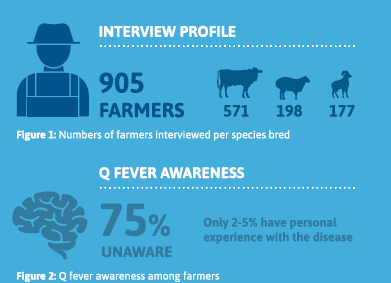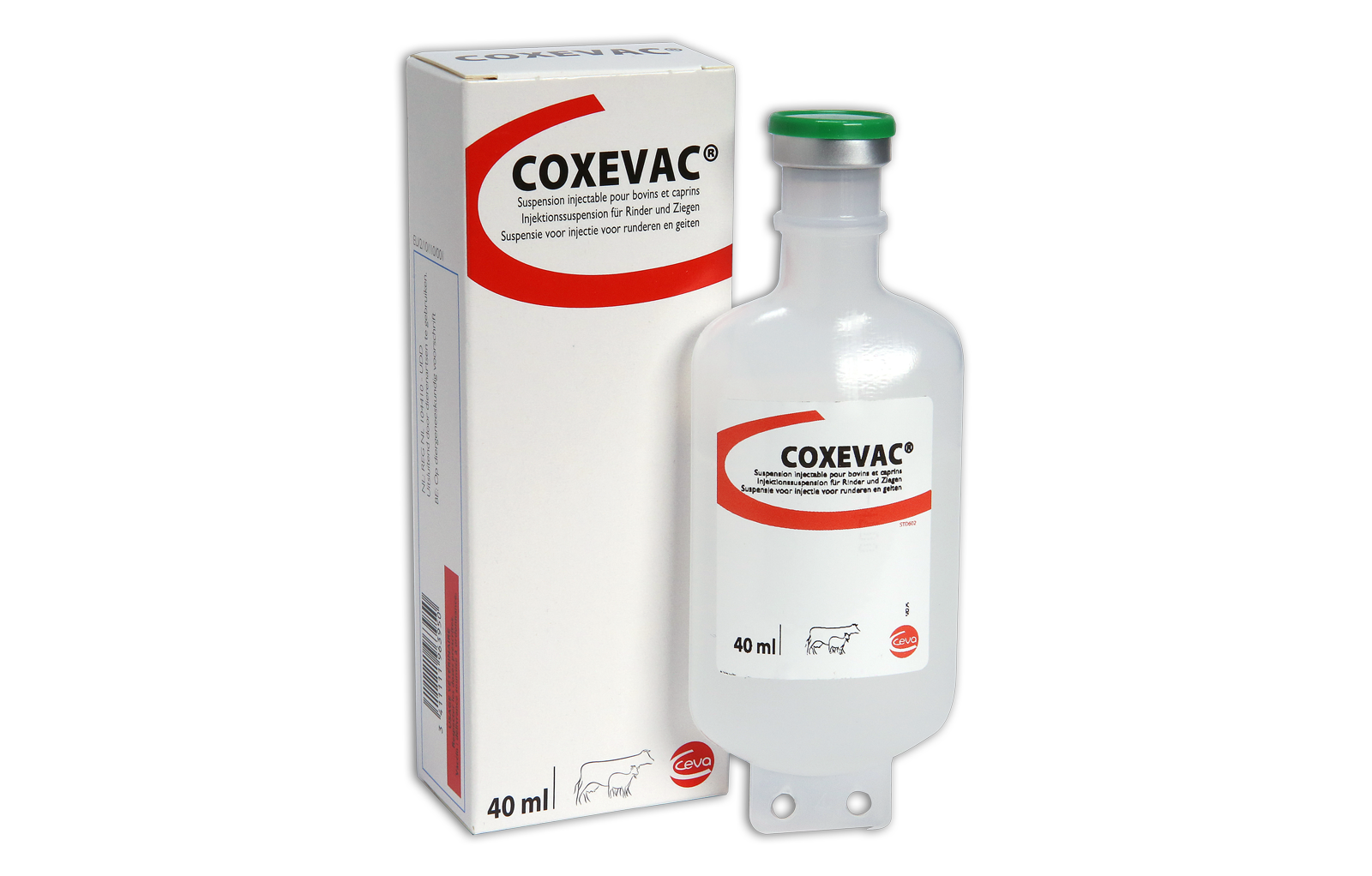Poster
Q Fever awareness among European ruminant farmers
Authors
Raphël Guatteo, George Valiakas, Vicent Dedet and the members of the European QFever committee
Publication information
European Buiatrics Congress 2025
Objectives
In the context of the One Health approach and the management of zoonosis, a European Q Fever Committee was established in 2024, bringing together veterinary and medical experts from various disciplines and countries. As a first preliminary step, an unprecedented and large survey of ruminant (cattle, sheep and goats) farmers was conducted in eight European countries, to assess their degree of awareness and level of knowledge on Q Fever, and their related practices in hygiene and medical control of the disease.
Materials and Methods
This survey was conducted by an independent company for opinion polling. Ruminant farmers were targeted in each country (Germany, France, Spain, Italy, UK, Belgium, Netherlands and Poland). The questionnaire used for a similar study conducted in France in 2019 was translated into English, and then into the respective local languages. Interviews were conducted using the Computer-Assisted Telephone Interview technology. Each interview was recorded and lasted 20 to 25 minutes. Interviews took place over the summer of 2024. As the data collected were dispersed over several countries and referred to various animal species, only descriptive statistical analysis was performed.
Results
905 farmers completed the interview, providing exploitable answers. Cattle (n=571), sheep (n=198) and goat (n=177) farmers were represented (some were farming several species) (Figure 1). In the Netherlands, only goat farmers (n=20) and in Germany, Belgium and Poland, only cattle farmers (n=80, n=60 and n=80, respectively) were interviewed. Respondents were mostly men (77%); 70% were over 40 years of age, which is comparable to the current situation in Europe. The average number of heads of animals per farm was 103 for cattle, 234 for sheep and 236 for goats. Overall, answers demonstrated a significant lack of farmers’ awareness about the disease, regardless of the country: approximately 75% of all farmers were either unaware of the disease or only familiar with its name in all countries (Figure 2). Veterinarians and digital channels were identified as the two main sources of information for animal health, both in comparable importance across countries, and even among the youngest farmers (25-35 years of age). Personal experience with Q Fever is very limited (2-5% of respondents) in most countries, but is higher in the Netherlands (12%) and France (13%). In the Netherlands, the largest zoonotic outbreak, linked to goat farming, occurring in 2007-2009, might explain this score.

The French results might be ascribed to the awareness campaigns set up by the French Q Fever committee over the last decade. Dutch and French farmers were also those who rated the risk of introduction of Q Fever on their farm as the highest (> 20 % of respondents consider this risk as high or very high). Less than 10% of other respondents perceived this risk as moderate. Most farmers aware of the disease know that the bacterium can be transported by wind over several kilometers and is transmissible from animals to humans. There was less consensus about the impact of Q Fever on the performance of breeding stock: e.g. among cattle farmers, the awareness rate in Spain was nearly twice that of France (57% vs. 31%, respectively). Even though the majority of respondents aware of the disease mention abortion as a manifestation of the disease, other clinical signs were rarely acknowledged. Following Q Fever diagnosis on a farm, at least 90% of farmers mention hygiene measures and manure management as priority control measures. Vaccination and treatments are equally considered by about 25% of farmers, except in Italy where vaccination is only mentioned by 6% of farmers and in Germany where it is not mentioned at all. In contrast, 50% of British cattle farmers and 38% of Spanish cattle farmers refer to vaccination over other treatments. In all countries, apart from the Netherlands (100%) and France (27%), vaccination rates against Q Fever are generally low (89-95% of respondents do not vaccinate), a puzzling fact since those farmers are aware of its zoonotic trait. However, among farmers with personal experience with Q Fever, the vaccination rate is higher (29-50%, and even 71% in France).
Conclusions
Even though in some countries only farmers of a specific ruminant species were interviewed, to the authors’ knowledge, this is the largest survey on the perception of Q Fever by ruminant farmers in Europe. Although some countries present particular profiles, it should be noted that awareness of the disease is limited among farmers, including infection control and prevention of transmission. The established European Q Fever committee intends to use the reported results to tailor specific awareness/ information campaigns for each country.
Publication file:




